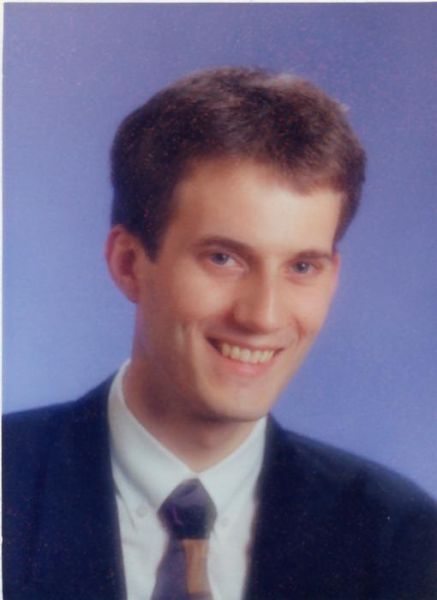Invited Speakers
Dr. Eric Chaput

Airbus, Flight Physics Capability Strategy:
MDO for Highly Effective Aircraft Design
Dr. Eric Chaput joined Airbus in 1992 after a Ph.D. in Energetics and Optimisation, Post-doctoral positions in Experimental and Numerical Simulation at University of Poitiers, and six years’ experience at Airbus Defence & Space working for ARIANE and HERMES programmes. He became subsequently CFD Research Manager, before managing Aerodynamics Methods and in 2004, Senior Manager of Flight Physics Methods. He is currently the leader of Airbus Flight-Physics capability strategy and a Senior Expert in Aerodynamics Flow Simulation Methods. He has long experience and interest in driving the development of Airbus engineering multidisciplinary capabilities, through collaborative research projects and industrialization of integrated methods & tools within highly productive design environment.
Prof. Joaquim Martins

University of Michigan (Ann Arbor), Dept. of Aerospace Engineering:
High-fidelity Adjoint-based Multidisciplinary Design Optimization of Aircraft Configurations
The wing is a crucial aircraft component, and its shape has a large impact performance. Wing design optimization has been an active area of research for several decades, but achieving practical designs has been a challenge. One of the main challenges is the wing flexibility, which requires the consideration of both aerodynamics and structures. To address this, we proposed the simultaneous optimization of the outer mold line of a wing and its structural sizing. The solution of such design optimization problems is made possible by a framework for high-fidelity aerostructural optimization that uses state-of-the-art numerical methods. This framework combines a three-dimensional CFD solver, a finite-element structural model of the wingbox, a geometry modeler, and a gradient-based optimizer. With this framework we are able to compute the flying shape at the various flight conditions, and to optimize aircraft configurations with respect to hundreds of aerodynamic shape and internal structural sizes. The theoretical developments include coupled-adjoint sensitivity analysis, an automatic differentiation adjoint approach, and new formulations for various practical constraints. The algorithms resulting from these developments are all implemented to take advantage of high-performance parallel computing. Applications to the optimization of aircraft configurations demonstrate the effectiveness of these approaches in designing aircraft wings for minimum fuel burn. The results show optimal tradeoffs with respect to wing span and sweep, which was previously not possible with high-fidelity models.
Bio
Joaquim R. R. A. Martins is a Professor at the University of Michigan, where he heads the Multidisciplinary Design Optimization Laboratory (MDOlab) in the Department of Aerospace Engineering. He is currently on sabbatical leave as an invited professor and Marie Curie Fellow at the Institut Supérieur de l'Aéronautique et de l'Espace (ISAE–SupAéro). His research involves the development and application of MDO methodologies to the design of aircraft configurations, with a focus on high-fidelity simulations that take advantage of high-performance parallel computing. Before joining the University of Michigan faculty in September 2009, he was an Associate Professor at the University of Toronto, where from 2002 he held a Tier II Canada Research Chair in Multidisciplinary Optimization. Prof. Martins received his undergraduate degree in Aeronautical Engineering from Imperial College, London, with a British Aerospace Award. He obtained both his M.Sc. and Ph.D. degrees from Stanford University, where he was awarded the Ballhaus prize for best thesis in the Department of Aeronautics and Astronautics. He was a keynote speaker at the International Forum on Aeroelasticity and Structural Dynamics (2007), Aircraft Structural Design Conference (2010), and SIAM Conference on Optimization (2014). He has received the Best Paper Award in the AIAA Multidisciplinary Analysis and Optimization Conference four times (2002, 2006, 2012, and 2014). He is a member of the AIAA MDO Technical Committee and was the technical co-chair for the 2008 AIAA Multidisciplinary Analysis and Optimization Conference. He is also an Associate Editor for Optimization and Engineering and Structural and Multidisciplinary Optimization.
Dr. Christof Hinterberger

Faurecia Emissions Control Technologies:
From package space to final product design – with adjoint CFD
Package space restrictions and performance requirements (e.g., backpressure, flow-uniformity) present particular challenges for the layout of automotive exhaust systems. To address these difficulties, a geometry optimization workflow has been developed at the automotive supplier Faurecia Emissions Control Technologies [1, 2], which is based on the adjoint CFD method developed by Othmer et al. [3, 4]. The workflow helps to find suitable solutions quickly during the product development process. The workflow will be presented with several examples.
[1] C. Hinterberger, M. Olesen: Automatic geometry optimization of exhaust systems based on sensitivities computed by a continuous adjoint CFD method in OpenFOAM. SAE 2010-01-1278.
[2] C. Hinterberger, M. Olesen, Industrial Application of Continuous Adjoint Flow Solvers for the Optimization Of Automotive Exhaust Systems, in proceedings of ECCOMAS CFD & Optimization conference, Antalya (2011)
[3] C. Othmer, E. de Villiers and H.G. Weller, Implementation of a continuous adjoint for topology optimization of ducted flows, AIAA-2007-3947.
[4] C. Othmer, A continuous adjoint formulation for the computation of topological and surface sensitivities of ducted flows, Int. J. Num. Meth. Fluids, Vol. 58, pp. 861-877, 2008.
Bio
Dr.-Ing. Christof Hinterberger is an expert for thermo-fluid analysis at the OEM automotive supplier Faurecia Emissions Control Technologies, in Augsburg Germany.
He graduated in Mechanical Engineering at the Technical University of Munich, and later completed his PhD in the field of Large Eddy Simulation at the Institute of Hydromechanics, University of Karlsruhe.
His current work at Faurecia focuses on developing CFD methods (e.g., for SCR-systems, simulation of soot loading and regeneration of diesel particulate filters, flow noise prediction of mufflers and tailpipes)
Over the past 10 years, his work has also included a strong focus on geometry optimization using the continuous adjoint approach within OpenFOAM.




